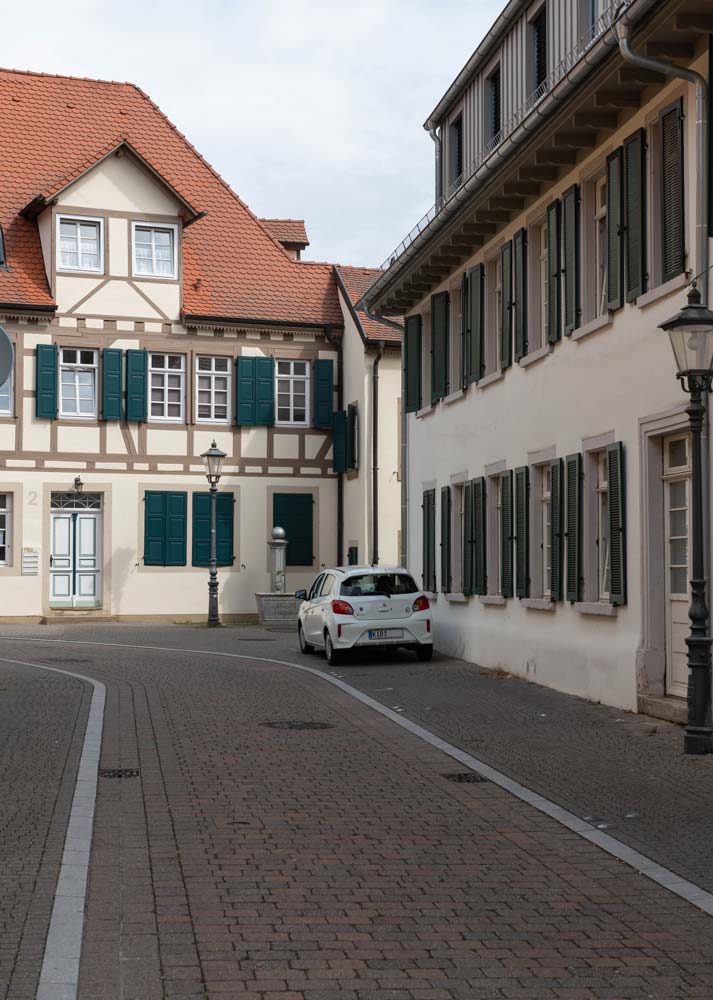Museum in the city palace


Castle and market
Only very sparse information has survived about Count Henry II of Sponheim’s castle in Kirchheimboland. Around 1370, there is talk of a “borg” at the “Bischeymer Pforte”, near today’s gateway between Schlossstraße and Schlossplatz.
This castle is described in more detail as a “house with a garden”. However, the reference to a castle chapel in 1390 suggests that it was soon extended. If the course of the town wall is also taken into account, the castle was located in the area of the “Bischeymer Pforte” between Schlossplatz [Standort 31] and Untere Mozartstraße.
By expanding the castle, Henry was hardly likely to have been satisfied with anything less than what the ancestral castles of his wife and his mother (both were Countesses of Katzenelnbogen in the Taunus) and his grandmother (Kunigunde von Bolanden) offered in terms of amenities.
So it was probably quite a structurally representative ambience for the events that took place every Thursday in front of the castle on the market square.
The town charter of 1368 guarantees the right granted by Emperor Charles IV that the Count of Kirchheim should have a weekly market every week on Thorn Day.


“Via Regia”
The “Via Regia” (“King’s Road”) is a medieval traffic artery between the Dnieper (Ukraine) and northern Spain across Europe. However, this does not mean developed roads in the modern sense, but rather paved paths in a traffic corridor.
In our region, Mainz and Alzey as well as Kirchheimbolanden and Kaiserslautern were in this corridor. One route ran from Alzey via Ilbesheim – Gauersheim – Albisheim – through the Stumpfwald forest and on to Kaiserslautern.
In 2006, the “Via Regia” was declared an official “Cultural Route of the Council of Europe”. The focus is on the idea of creating a European identity, institutionalized in a “Via Regia Network”, to which more than 150 towns and other members belong – including Kirchheimbolanden.